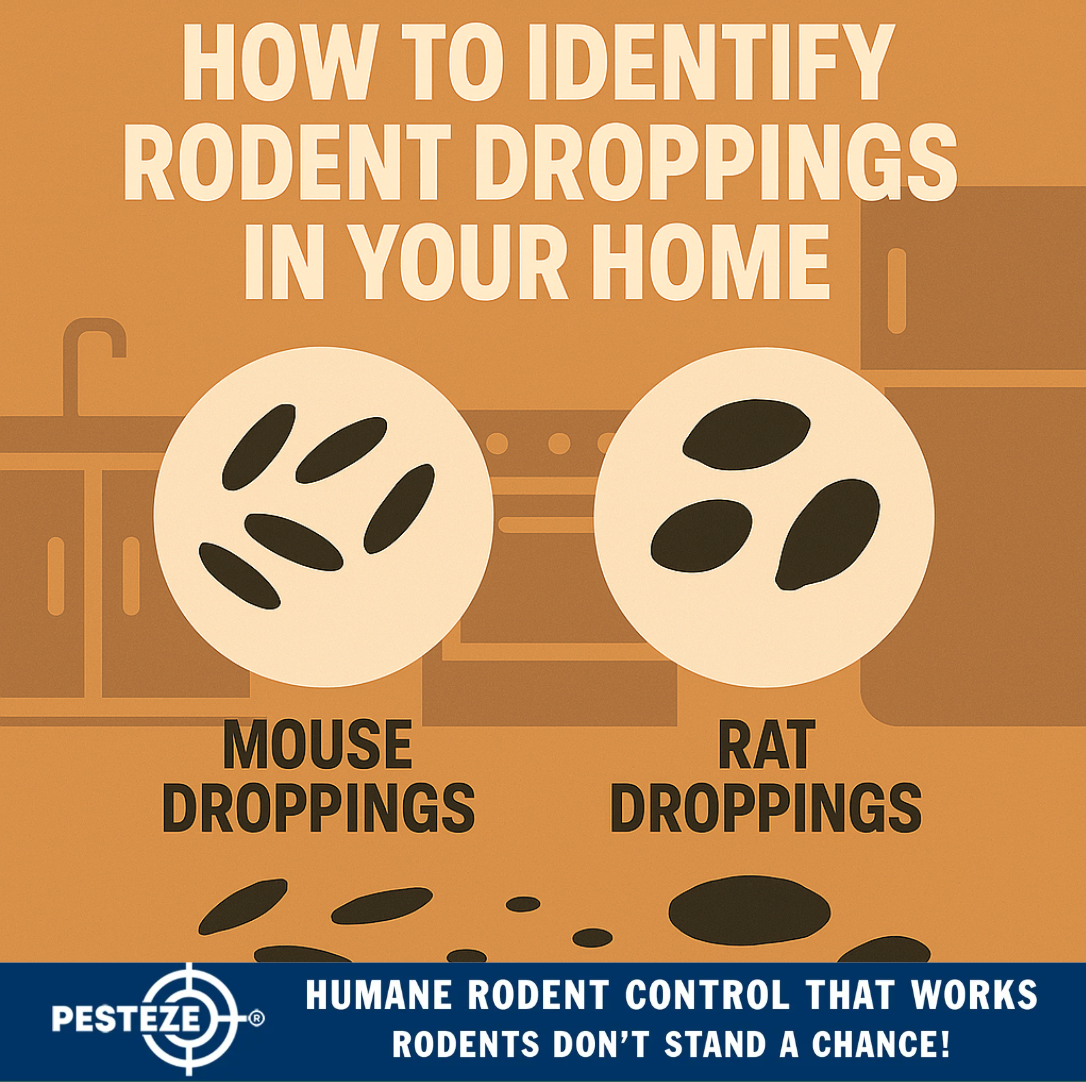HOW TO IDENTIFY RODENT DROPPINGS IN YOUR HOME

HOW TO IDENTIFY RODENT DROPPINGS IN YOUR HOME
SUMMARY
Rodent droppings are one of the clearest signs of an infestation. Learn how to spot and identify them to take quick action against rodents in your home.
FEATURES
-
Mouse Droppings: Small, pointed, and rice-shaped.
-
Rat Droppings: Larger, blunt-ended pellets.
-
Fresh vs. Old: Fresh droppings are dark and moist, old ones are dry and crumbly.
-
Common Locations: Kitchens, basements, attics, and behind appliances.
-
Health Risks: Droppings can spread bacteria and trigger allergies.
-
Next Steps: Clean safely and set traps for immediate control.
DESCRIPTION
Identifying rodent droppings is one of the fastest ways to confirm a potential infestation in your home. Because rodents are nocturnal and often hide during the day, their droppings are a more reliable sign than sightings alone.
Mouse droppings are typically small, about the size of a grain of rice, with pointed ends. They are usually found in clusters of 30 to 50 pellets. In contrast, rat droppings are larger, roughly half an inch or more in length, and tend to have blunt ends. They may appear scattered or grouped together in high-activity areas.
Another important factor is determining whether droppings are fresh or old. Fresh droppings appear shiny, dark, and slightly moist. Over time, they dry out, turn grey, and become crumbly. Noting the condition helps you understand whether the infestation is current or if rodents may have already moved on.
Droppings are commonly found in kitchens, pantries, and near food sources. They may also appear in attics, basements, garages, and behind large appliances like stoves or refrigerators. Checking these areas regularly can help you detect infestations early.
Beyond being unsightly, rodent droppings pose health risks. They can carry harmful bacteria such as salmonella and spread viruses that affect humans. Airborne particles from dried droppings may also trigger allergies or asthma symptoms.
If you find droppings, always clean them safely. Wear gloves and a mask, spray the area with disinfectant, and use paper towels to remove them. Avoid sweeping or vacuuming, as this can release dangerous particles into the air. After cleanup, set traps or contact pest control to prevent further activity.
By learning to identify and handle rodent droppings properly, you can take quick action to protect your household from the dangers of infestation.
- Saharsh Bansal


Comments 0